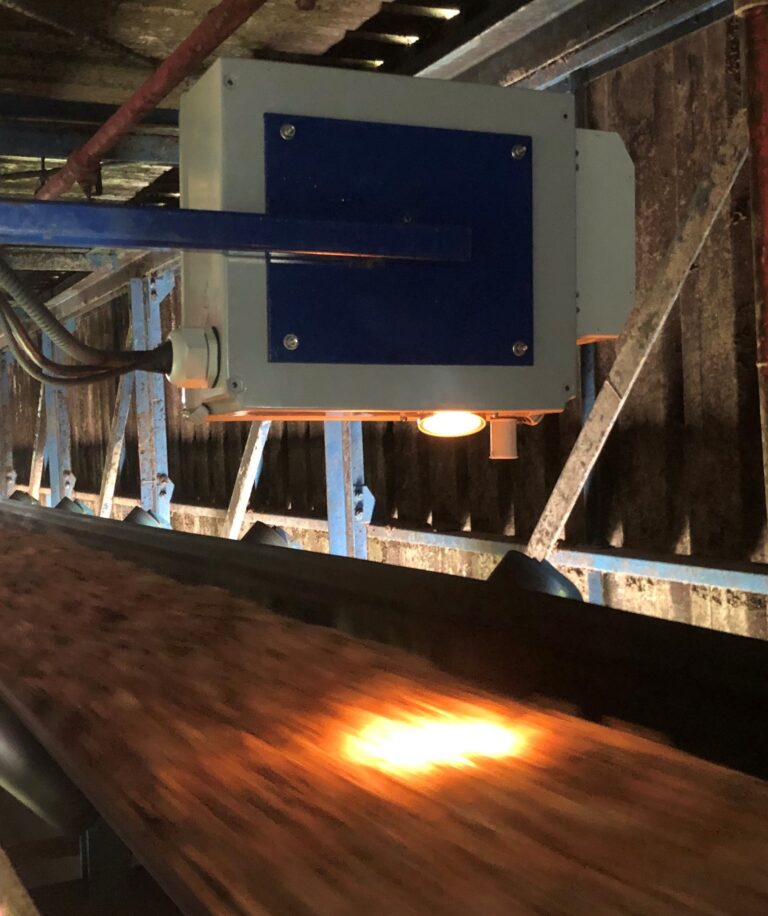
Features
Process Control
Pulp
Research & Innovation
Test & Measurement
The endless possibilities of wood chip sensor technology
Frequent measurement of wood chip properties at a low-cost could benefit the industry in many ways
April 13, 2021 By FPInnovations
 Biomass sensor by FPInnovations. Photo: FPInnovations
Biomass sensor by FPInnovations. Photo: FPInnovations You think you’re the only one who’s had issues measuring wood chip properties? Well, you’re not.
On-line and real-time measurement of wood chip properties — whether chemical or physical — at pulp mills has been a challenge. This is due to the complex nature of the material itself as well as the harsh industrial conditions in which it’s found.
Even though wood fibre represents a substantial expense for a pulp mill, surprisingly, little had been done in the industry worldwide to characterize wood fibre properties at the beginning of the manufacturing process. Up until recently, when FPInnovations decided that it’s time to do something about it.
Why is measuring wood chip properties so important?
Frequent measurement of wood chip properties at a low-cost could benefit the industry in many ways:
- Develop new and advanced process control strategies to optimize operations (digester, refiner and bleach plant). This would maximize the value of the fibre, minimize waste and keep production volumes and product quality on target.
- Facilitate process troubleshooting when issues arise in a mill (e.g., accelerated corrosion, pitch depositions, kappa variability, etc.).
- Help better manage chip piles through enhanced sorting and seasoning.
- Help better assess the quality and value of purchased supplies.
NIR-based biomass sensor
Over the years, a number of sensors that specifically measure biomass moisture content have appeared on the market. They mainly used ionizing radiation (X-rays and gamma rays), microwaves or near-infrared (NIR) waves.
Among NIR sensors, two stand out. One type employs only a few wavelengths, and the other, a wide spectrum, which is a method known as NIR spectroscopy.
The NIR spectrum is like a fingerprint. It carries a plethora of physical and chemical information about the material investigated. NIR is also fast, it does not require contact with the material, and it does not present any health or safety hazards. This NIR spectroscopy sensor also offers a major advantage: in addition to moisture content, it can simultaneously measure a wide array of wood properties.
Based on the principle of NIR spectroscopy, FPInnovations’ Control group developed a new Biomass Sensor that is able to identify and characterize a multitude of wood chip properties, on-line and in real-time. The properties examined include moisture content, brightness, extractives, lignin content and carbohydrates content.
To achieve this, researchers created a database containing thousands of wood chip spectra for various commercial species. They also developed models that relate the spectral features to the properties of interest.
When the Biomass Sensor collects a new spectrum at the mill, the models are used to compare its features to those listed in the spectral database, allowing the sensor to make accurate predictions about the properties of the chips.
The Biomass Sensor can be easily and conveniently installed over a conveyor belt without any modifications.
Continuous innovations
Even though technology has been commercialized by FPInnovations’ licensee FITNIR Analyzers Inc., FPInnovations continues to add new capabilities to the Biomass Sensor and to leverage it in innovative and exciting applications.
For example, a new feed-rate control strategy for continuous digesters used the moisture content measurement of the Biomass Sensor to adjust based on the dry mass of the chips. This strategy helped keep the digester production rate on target and led to an overall increase in production.
The Biomass Sensor was also used to determine hog fuel moisture content and calorific value on the feed to a power boiler. This helped minimize power boiler instability caused by combustion of poor-quality hog fuel, and ultimately, avoid power boiler black outs. These two novel applications are only the beginning of a new series of innovations that will be made possible by the continuous development of this technology.
In the future, on-line measurement of lignin content could also be used in a control strategy for continuous digesters to reduce Kappa variability. Chip brightness could potentially be used to optimize operations in the bleach plant for TMP mills. The determination of carbohydrates content could help optimize operations in bio-refineries and dissolved pulp mills.
Knowledge of chip extractives content could possible help minimize issues such as pitch depositions and accelerated corrosion, and can also be of interest for the valorization of byproducts.
These new measurements could also find outlets in wood yard management by better assessing the quality and value of the supply, sorting the chips according to their properties, and gaining better control over the seasoning process. The possibilities are endless.
Proven technology with solid potential
Through the development of the Biomass Sensor, FPInnovations has demonstrated that NIR spectroscopy can be used to perform reliable measurements of biomass properties in harsh industrial environments.
The Biomass Sensor has been used for several years in multiple mills in Canada and abroad to provide timely, reliable, and accurate real-time on-line measurements. These measurements, in turn, have been employed in process control strategies and have driven decision-making, bringing direct benefits to mill operations.
This represents the beginning of a new generation of sensors for the pulp and paper industry that are expected to significantly enhance fibre utilization and fibreline operations, thereby leading to significant economies.
For more information, contact Guillaume Hans, senior scientist at FPInnovations, at guillaume.hans@fpinnovations.ca.
This article appears in the Spring 2021 issue of Pulp & Paper Canada.
Print this page